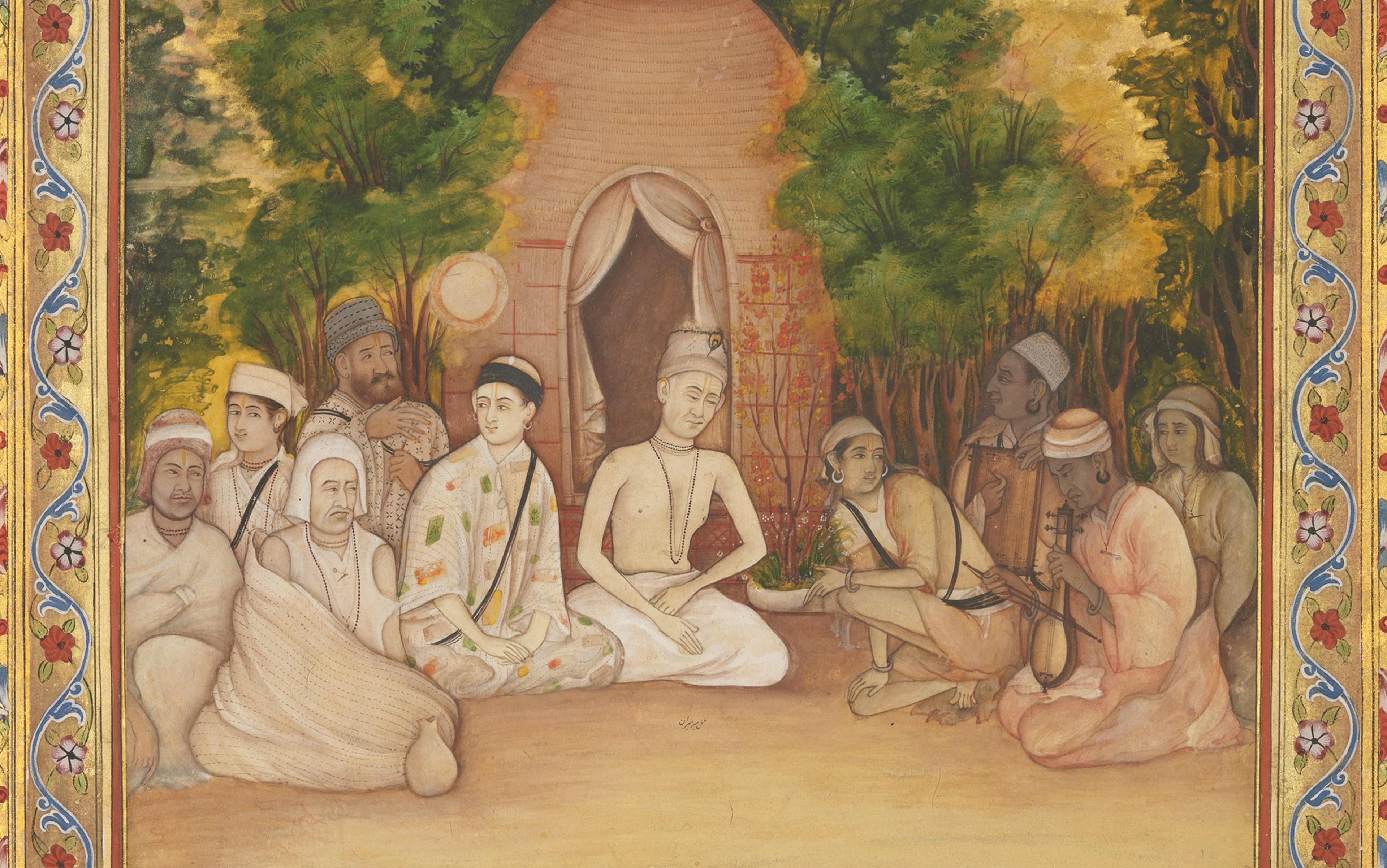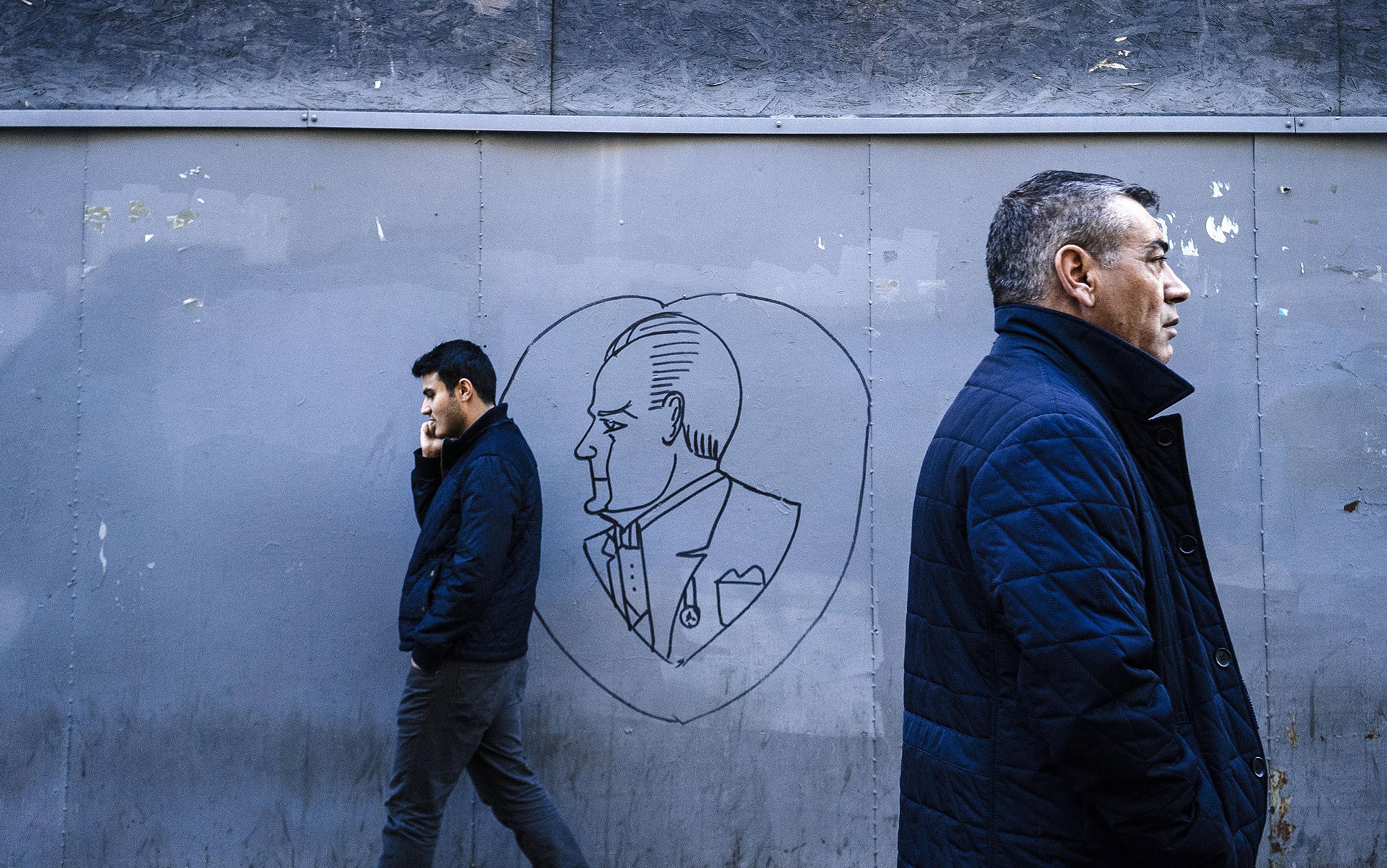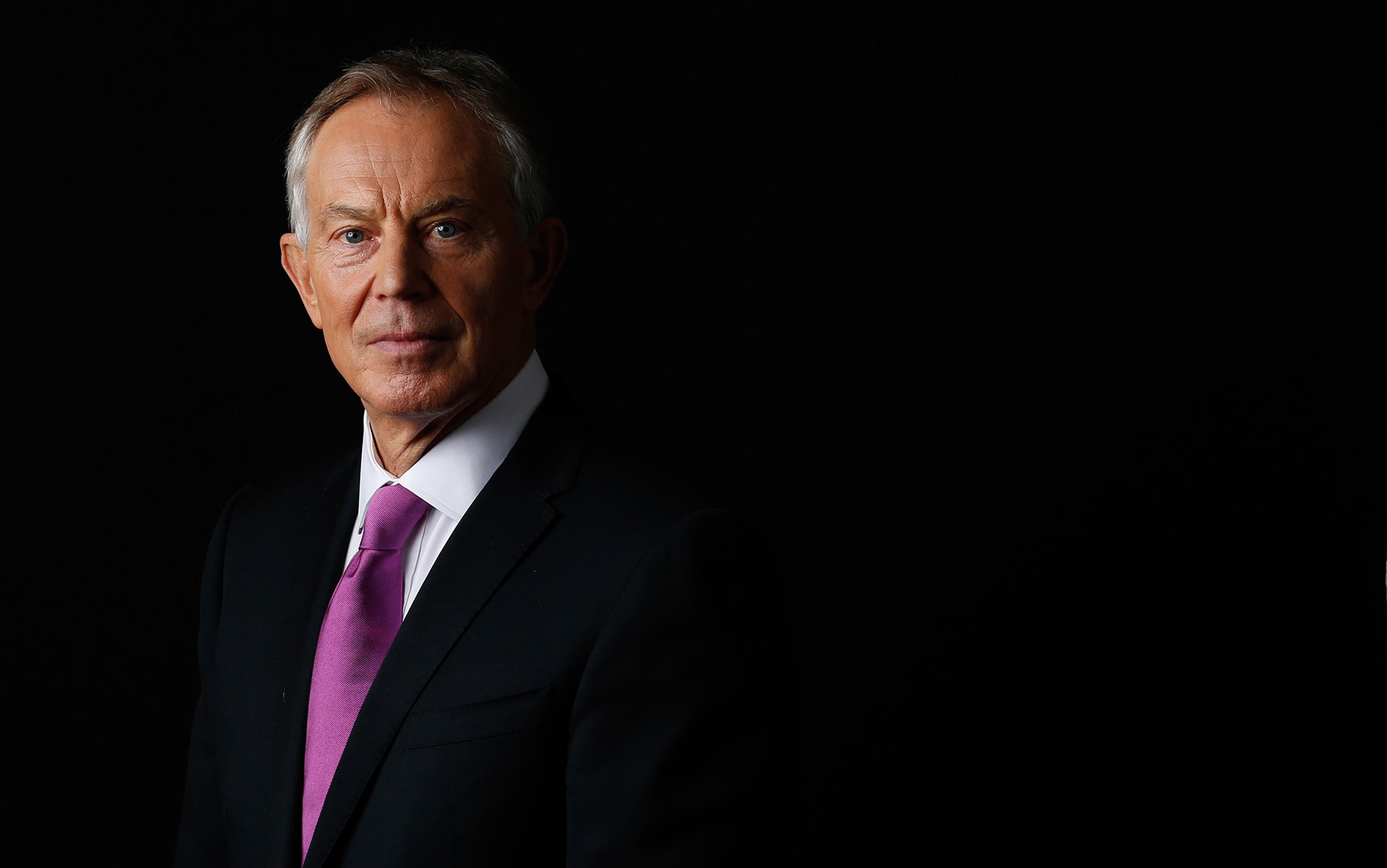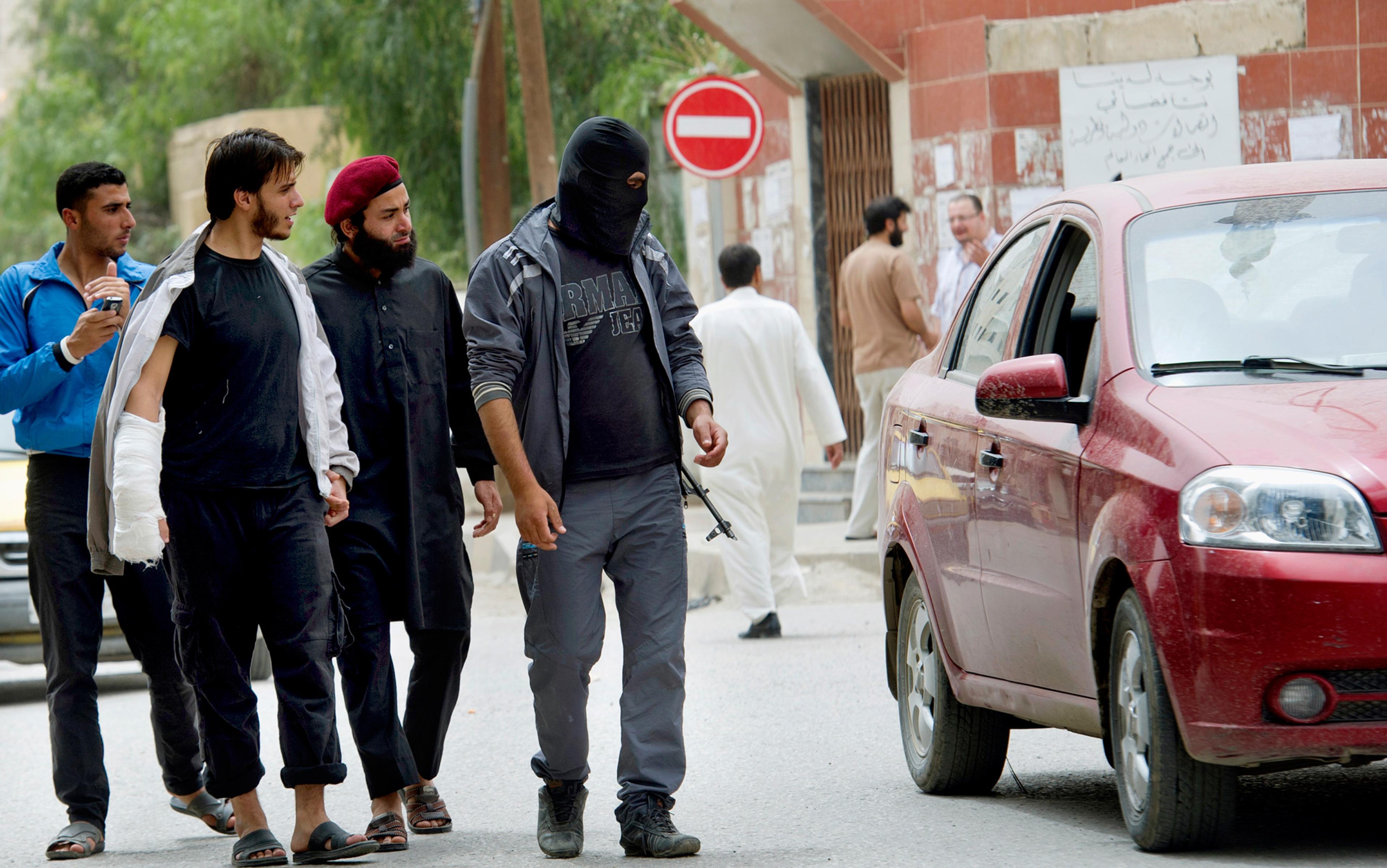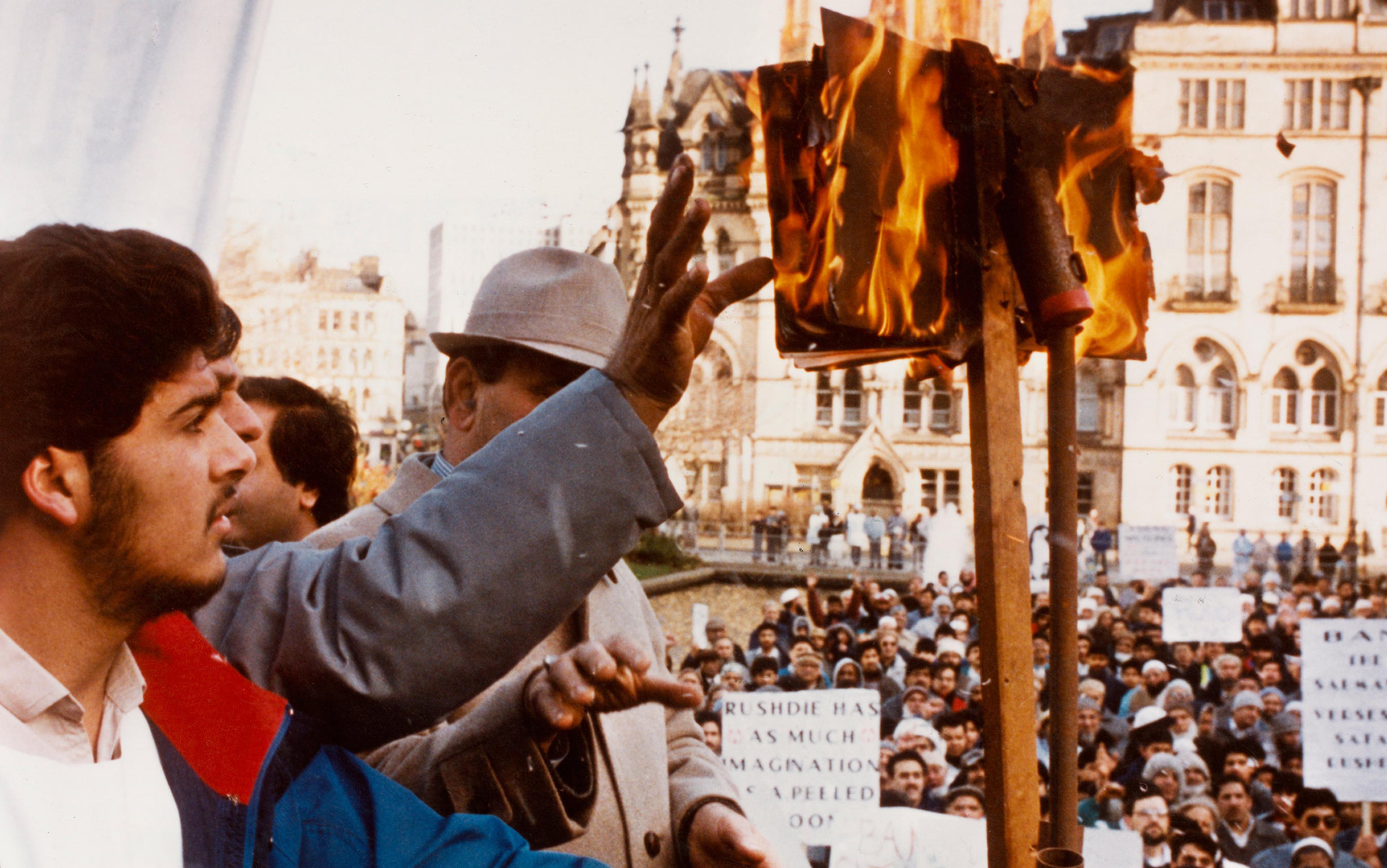Even sophisticated people speak of Islam as if it is one thing. The devout, the haters and the indifferent often share this belief in Muslim unity. And for them all there is no greater display of Muslim unity than the Hajj.
The Hajj, the pilgrimage to Mecca, is a grand and dramatic display of Islamic brotherhood without racial or national bounds. Or so it appears from the outside. But this way of seeing the pilgrimage is relatively new. It seems to have originated in accounts by 19th-century European travellers. The most active and best proponents of the myth of the Hajj have always been notable Western converts, such as the Galician Jew Leopold Weiss, who became the Islamic thinker and Pakistani politician Muhammad Asad, or Malcolm X, the activist for equality in the United States, who wrote about the Hajj in rapturous terms. Given that Saudi Arabia had abolished slavery only a few years before Malcolm X’s pilgrimage, his view of the Hajj as the embodiment of a longstanding and more just alternative society might have been a bit naïve.
Muslims themselves have also taken up the claim that the Hajj represents a kind of ideal society, free of the prejudices and divisions that dominate the profane world.
Proponents of the Hajj as a social ideal speak of the brotherhood it enacts. Brotherhood is a common and powerful metaphor of closeness. As all brothers know, however, brotherhood is rarely if ever about equality.
Muslim teaching has much to say about brotherhood, and about equality. Clearly, they are not the same thing, and can even contradict one another. Families, after all, tend to be hierarchical and harbour various kinds of violence. They often sacrifice some members for others. The newly fashionable term ‘Abrahamic religions’ tries to mask such unhappiness. In the past generation, this term has grown in popularity as an alternative to ‘Christian’ or ‘Judeo-Christian’.
By emphasising the patriarch Abraham – the common ancestor – ‘Abrahamic religions’ is meant to express the familial relationship between Judaism, Christianity and Islam. The patriarch Abraham’s sacrifice, according to the metaphor, makes him foundational for all three religions. Proponents of the ‘Abrahamic religions’ want to emphasise closeness and de-emphasise conflict.
But Abraham was ready to sacrifice one son and abandon another. This is not a simple and happy family. Nor is it necessarily a close one.
The historical experience of Abraham’s metaphorical descendants is simply very different. Only a minority of Muslims, those living around the Mediterranean basin or the Caucasus, have grown up with Christians and Jews as interlocutors and neighbours. Historically, Islam’s primary siblings have been not Jews or Christians but Hindus, Buddhists and Zoroastrians. Unlike their Jewish and Christian ‘brothers’, Muslims are part of a polytheistic and non-Semitic world. The poor ‘Abrahamic religions’ metaphor tears away the historical experience of the majority of the world’s Muslims.
Like the idea of the three monotheistic brothers, the idea of Muslim unity is recent, well-meaning and highly misleading. At a deep level, both ideals – Muslim unity and Abrahamic religions – are based on violence. But what does it really mean to describe as violent such a seemingly benign ideal as Muslim unity?
Last August, I was in Riyadh for a conference. It’s not so easy to get into Saudi Arabia and, while there, I thought I might visit the sacred cities of Mecca and Medina. The Hajj was about to begin, so the opportunity was a rare one. Thanks to the Indian consulate in Jeddah, I managed to secure the services of guides in both cities. And so I found myself travelling to Mecca with an Indian driver and companion. He turned out to be a Muslim divine from the city of Deoband, one of the great seminaries of the subcontinent.
In its magnificently craggy desert setting, Mecca is a redeveloped place, devoid of any historical or aesthetic character. The black-draped Kaaba, standing at Islam’s ritual centre, lay within a corset-like framework of stairs and floors that allow pilgrims to circumambulate it on three levels. Many circled the Kaaba while filming themselves with mobile phones, adding a new gesture to the ceremonies of pilgrimage. Two disasters marred last year’s Hajj: a crane collapsed in the Great Mosque, and a stampede occurred at Mina. Both involved hundreds of fatalities. But the only discomfort I suffered was when a pilgrim in a wheelchair ran over my foot as I trudged my seven circles around the Kaaba.
On the road back to Jeddah, the driver got into an argument with the Deobandi divine. Our driver was a fan of the Mumbai-based television preacher Zakir Naik. Naik’s satellite TV show has made him a global Muslim celebrity. He is a conservative televangelist whose sermons are in the model of American media figures such as the Southern Baptist pastor Jerry Falwell, as were the orations of his predecessor, the South African Muslim preacher Ahmed Deedat. Like Deedat, Naik preaches in English, and his popular show espouses highly conservative views. He wears a Western suit and a skullcap. The driver also wore Western clothes, and clearly saw himself, like Naik, as a modern man, yet one who prized social and religious harmony above all else. The driver said he disapproved of the sectarian disputes among Muslims and religious conflict in India, too. He praised the peaceable nature of the Hajj.
The Deobandi cleric pointed out that the order and harmony of the Hajj derived from Saudi Arabia’s monarchical form of government. The Saudis, he observed, support one form of Islam and prohibit the public manifestation of all others. The nature of Saudi government ensured many different kinds of believers could mingle without open dispute. Indian democracy, the Deobandi divine noted, entailed the absence of a state religion. Sectarian disagreement and disputes, he observed, resulted naturally from the freedoms of a republican form of government. Republics, he insisted, maintain their democratic character through disagreement. They would lose it by favouring any one religion – by which of course he meant Hinduism – even if it was to promote social harmony. Consensus, he was saying, was not a mark of freedom but its opposite.
Liberal Muslims commonly make this argument about the good of religious difference. When they do, they often cite scriptural passages about the virtue of difference and the competition in goodness it makes possible. The Deobandi divine, however, drew his justification not from theology, but politics construed as a realm autonomous of it. He was not interested in tolerance or pluralism as inherently good things. Instead, the divine made a case that conflict and contestation must be part of political life. Democracy, he was saying, was not afraid of disagreement. On the contrary, democracy and freedom depended not on some false consensus, but on institutional mechanisms that helped prevent dispute from turning into violence or oppression. In other words, democracy made living with disagreement possible.
The channels and institutions of disagreement in India and other democracies might not always prevent violence. During elections they can even foment it. Nevertheless, their ideal is meant to stand as a guarantor of freedom for all citizens, not just members of one religion or sect. By focusing on disagreement in the political life of a democracy, my Deobandi guide was criticising the driver’s liberal pleas for harmony and unity as anti-political and illusory in nature. The cleric left scripture to the side. He focused on the state, and its essential role as the guarantor of this freedom. Indeed, there is no group in India – Muslims chief among them – that does not advocate for a secular state. What exactly secularism means, however, constitutes one of the great subjects of disagreement in India.
Importantly, there is nothing peculiarly Indian about the cleric’s turn to the state and its politics. The nation-state is inescapable when it comes to matters of establishing and governing matters within and between religious communities. People often see the Hajj as an example of Islam’s global, transnational community. However, even the possibility and experience of the Hajj is shaped entirely by nationality. It is not a melting away of national distinctions in transcendental unity. Rather, the Hajj is a carefully managed, entirely conventional instance of internationalism. First, quotas for pilgrims are set by their national citizenship: one per cent of a country’s Muslim population is given visas. Throughout the Hajj, pilgrims are marked by national identity. They are provided name tags, backpacks, sun visors and other paraphernalia by tour companies. All are embossed with national flags or printed in their colours. Guides have national flags attached to their clothing.
National languages play a crucial role in the Hajj. Housing and services provided to Indian pilgrims are identified in Hindi, whose script is also that of Hinduism’s sacred language. Because of the large numbers of Keralans settled in Gulf countries, one also saw housing and other services identified in Malayalam, the language of Kerala, in southern India. Sometimes, a dormitory in Mecca becomes full, and a pilgrim from one part of the country must be housed with pilgrims from another region. I am told that loud complaints about inedible food and strange tongues always follow – as they would among the pilgrims’ Hindu compatriots similarly housed in the holy city of Benares.
because we were marked as Indian, we exchanged no words of greeting at this most sacred site of Muslim brotherhood and unity
In Mecca, pilgrims’ native tongues vary at least as much as their nationality. As a result, very few pilgrims can communicate with those from other countries in any language but English or French: which it is depends on their particular history of colonisation. Thus even the experience of Muslim global unity supposedly exemplified by the Hajj is facilitated by the languages of the Western European coloniser.
Arabic, English, and Urdu are the languages most conspicuous at the Hajj, visible on signs and notices all over Mecca and Medina. Arabic is there largely for symbolic reasons, given that there are relatively few Arab pilgrims. My guide and I conversed in Urdu, which is both a north Indian language and the national language of Pakistan. We often came across Pakistani pilgrims speaking the same language. But because my guide and I were marked as Indian, never once did they acknowledge us, nor us them. We exchanged no words of greeting at this most sacred site of Muslim brotherhood and unity. We remained identified by our nation-states, which defined our experiences.
The multilingual signs of Mecca proliferate at important sites and monuments. Illustrated with citations from Muhammad’s sayings, these notices warn pilgrims against touching or kissing structures that the Saudis haven’t torn down, and warn against taking back sand from the holy places as a souvenir. The Saudi government fears that such souvenirs could engender idolatrous, un-Islamic attachment. As a result, authorities have fenced off the areas that once held the tombs belonging to the Prophet’s relatives and Islam’s early martyrs. Such monuments would surely become objects of idolatry. The historic battlefield of Uhud outside Medina, for instance, had been walled with opaque glass, but pilgrims broke holes to peer at the wilderness within.
The Hajj is also replete with small acts of insubordination. Signs bearing images of forbidden practices, each crossed out by a red X, serve only to highlight these instances of minor rebellion. The pillar outside Mecca at the site of Muhammad’s last sermon, for example, has its top plastered with signs warning pilgrims against paying it any devotion. But the bottom of the pillar is covered with graffiti, which in the circumstances is not a defacement, but the only way to recognise the site’s sacredness. In effect, the signs speak of a city under occupation, apparent prescriptions for order imposed from above by a foreign ruler. The Saudi royal family and its Wahhabi form of Islam, after all, took the holy cities by force only in the 20th century, in the wake of the First World War.
The harmony of the Hajj is simply not based on any kind of Muslim unity of any significance. Its order and concord derive from, on the one hand, the dominance of Saudi monarchy and Wahhabi establishment and, on the other, mutual indifference among Muslims.
My Indian driver told me of a rumour about the Barelvis, great rivals of the Deobandis in India and Pakistan. He accused the Barelvis of praying privately in their hotel rooms. They feared, he alleged, that standing behind Wahhabi imams in the mosque would imperil their salvation. It is true that Saudi control confers on the Wahhabi denomination some exclusive prerogatives in the holy cities. But the shuffling, inelegant rows of pilgrims at prayer in Mecca, each with his or her own slightly divergent ritual tradition, are subtle demonstrations that Islam, even in the heart of Wahhabism, even during the Hajj, can never be brought completely under any sect’s control.
Today, calls for Muslim unity come from so-called militants and moderates alike. Such calls for Muslim unity do not date back much before the 20th century. To be sure, the ideal of universal agreement in Islam might have existed before. But it seldom constituted a political or even religious project beyond fairly circumscribed arenas of debate. On the contrary, the internal schisms and conflicts of Muslim societies demonstrated a sense of confidence and comfort with disagreement as a political necessity. This recognition of disunity is illustrated by an oft-cited saying attributed to Muhammad; in it, the Prophet pronounced that his community would be divided into 72 sects until the end of time, with only a single crucially unspecified one bound for salvation.
With the rise of European empires in the 18th and 19th centuries, Muslim unity emerged as a significant theme. In other words, this unity served as a defensive strategy to counter the loss of Muslims’ control over their own political life. Still, the desire remained largely theoretical, even during the heyday of Pan-Islamism in the early 20th century. It took the rise of new global movements and identities following the end of the Cold War for the current visions of Muslim unity to arise.
One of the earliest moments in the new, and now explicitly global rather than merely international, project of Muslim unity came with mobilisations that followed the outcry over Salman Rushdie’s allegedly blasphemous novel, The Satanic Verses (1989). The demonstrations were not and could not be confined to a particular country, movement, revolution or terrorist group. Made possible by television and the sense of simultaneity and collective identification that it offered, these reactions to a perceived affront catalysed new calls for a global form of Muslim unity that, unlike Pan-Islamism, didn’t take a coalition of states as its model.
This global mobilisation presented novel opportunities and challenges for Muslim leaders. Initially, this ‘Muslim unity’ appeared in the form of declarations signed by a motley crew of divines, politicians and ideologues for or against the Iranian fatwa calling for Rushdie’s murder. Some of these attempts at generating agreement sought to corral global forms of Muslim mobilisation in opposing ideological directions. The initial calls came in response to supposedly insulting depictions of the Prophet. More recently, such calls are made both in support and to counter the much less popular cause of recruiting Muslims to Al-Qaeda or ISIS.
Posturing about ‘Muslim unity’ tends only to alienate Muslims from the political world of nation-states that govern their societies
In some ways, these declarations resemble the long history of Christian ecumenical councils. But since Islam lacks an institutional basis comparable to the Vatican, the results are even less coherent. The calls for Muslim unity are no less, and no more, than the collective expression of a pious wish by a random assortment of dignitaries. If pressed or asked to take any actual measures signifying unity, even the signatories of these declarations would immediately find themselves in disagreement about ‘Muslim unity’.
At root, however, the problem is not the details of these calls for unity. It is the essence, the very ideal of consensus. As a matter of course, calls for Muslim unity customarily violate the spirit of their claims by anathematising their Muslim opponents. Calls for unity are not high-minded but, in a word, disingenuous, a seemingly noble pretext for anathematising or demonising opponents.
Even more deeply, however, the ideal of unity is inherently anti-political. The Deobandi cleric was right in identifying the political as the sphere offering the only real potential for peaceful accommodation of differences and disputes. Posturing about an illusory ‘Muslim unity’ tends only to alienate Muslims from the political world of nation-states that govern their societies. From this perspective, Muslim militancy, too, is actually a consequence of de-politicisation and not, as is commonly presumed, the reverse.
Whether by Western or Middle Eastern governments, condemnations of terrorism in religious language, in the name of Islam, are losing causes. Real problems will not be solved on theological terrain. When liberals and advocates of tolerance too celebrate or promote moderate Islam, it is another step away from the world of politics and institutions, the world of progress and solutions. The quest for harmony, for unity, is a siren song, and is to be resisted.

